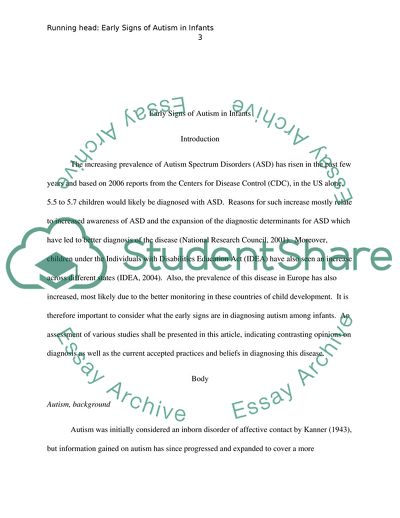Cite this document
(Early Signs of Autism in Infants Literature review Example | Topics and Well Written Essays - 2500 words, n.d.)
Early Signs of Autism in Infants Literature review Example | Topics and Well Written Essays - 2500 words. https://studentshare.org/psychology/1839735-early-signs-of-autism-in-infants
Early Signs of Autism in Infants Literature review Example | Topics and Well Written Essays - 2500 words. https://studentshare.org/psychology/1839735-early-signs-of-autism-in-infants
(Early Signs of Autism in Infants Literature Review Example | Topics and Well Written Essays - 2500 Words)
Early Signs of Autism in Infants Literature Review Example | Topics and Well Written Essays - 2500 Words. https://studentshare.org/psychology/1839735-early-signs-of-autism-in-infants.
Early Signs of Autism in Infants Literature Review Example | Topics and Well Written Essays - 2500 Words. https://studentshare.org/psychology/1839735-early-signs-of-autism-in-infants.
“Early Signs of Autism in Infants Literature Review Example | Topics and Well Written Essays - 2500 Words”. https://studentshare.org/psychology/1839735-early-signs-of-autism-in-infants.


